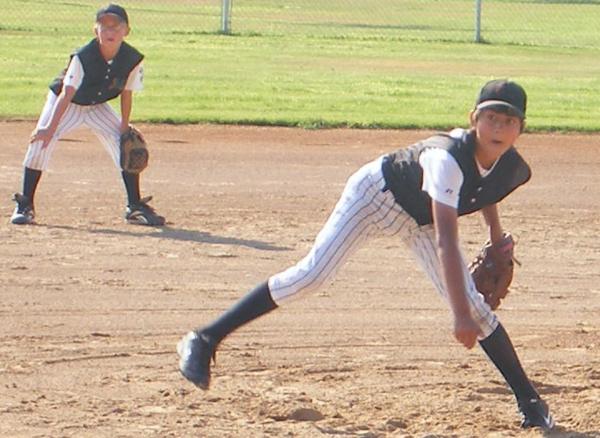Young baseball and softball players who receive direct ball impact to the anterior chest wall over the heart may go into sudden cardiac arrest, a condition called commotio cordis. Commotio cordis is the second highest cause of death in athletes younger than 14 years and is a unique occurrence in children, usually younger than 16 years, because they may be uniquely vulnerable to blunt chest impact because their chest walls are more elastic and easily compressed.
Prevention
Research has shown that, even with protective gear, the fatality rate for commotio cordis is an alarmingly high 90%. Based on a lack of peer reviewed data establishing that chest barriers or protection reduce the risk commotio cordis, the American Academy of Pediatrics does not recommend their routine use of heart protectors for baseball players "at this time", although it should be noted that not recommending in favor of such gear is not the same as recommending against their use, leaving it up to parents to consider whether purchasing such a protector may provide an extra measure of protection on a "better safe than sorry" approach.
To reduce the risk of commotio cordis:
- Batters: Batters who are taught to avoid the ball and turn away from an inside pitch can greatly reduce their risk. Because this is particularly difficult while bunting, it requires special attention and instruction.

- Pitchers can reduce the risk by learning proper fielding position after ball release as well as ball avoidance when necessary. The capacity to recognize that a batted ball is coming at the pitcher and the ability to react to that event before the ball arrives are crucial traits for protecting these athletes.
- It is estimated that 400 milliseconds is required for a pitcher to complete a protective movement, such as lifting a hand to the chest or face, which corresponds to a batted ball speed of 42 m/second. Because balls hit from metal bats may exceed this speed, performance standards have been developed for metal bats that limit their capacity to transfer force (velocity) to the batted ball.
- It is estimated that 400 milliseconds is required for a pitcher to complete a protective movement, such as lifting a hand to the chest or face, which corresponds to a batted ball speed of 42 m/second. Because balls hit from metal bats may exceed this speed, performance standards have been developed for metal bats that limit their capacity to transfer force (velocity) to the batted ball.
- Marginal improvements in speed of processing and reaction time can be achieved, presumably, with proper training and sufficient repetition.
- Because speed of processing and reaction time are now commonly measured during baseline neurocognitive testing which are increasingly given to high school athletes as part of concussion management programs, to minimize the risk of injury, a pitcher who has suffered a concussion should not be returned to the mound until his or her processing speed and reaction time have returned to baseline.
Preventing sudden cardiac death
Cardiac death caused by commotio cordis is potentially preventable. If sudden cardiac arrest occurs, an immediate and appropriate response may, in many cases, save a young player's life. Automatic external defibrillators (AEDs) are becoming more prevalent in the sports world at athletic complexes and certainly in police patrol cars and emergency medical vehicles. The use of an AED, along with CPR, has become a standard first step in treating cardiac arrest (called the cardiac chain of survival).
If no AED is available near the affected child the emergency medical care system should be activated by calling 911 to get an AED to the athlete's side as soon as possible (ideally within 3 minutes).
Baseball coaches should be routinely reminded to have a fully functional mobile phone, pre-programed with emergency medical care access numbers (e.g. ICE or In Case of Emergency) programmed and available at every youth baseball and softball game and practice in the event of a medical emergency.
Source: American Academy of Pediatrics Council on Sports Medicine and Fitness, Baseball and Softball Policy Statement (doi 10.1542/peds 2011-3593)(www.pediatrics.org/cgi/doi/10.1542/peds2011-3593 (accessed February 27, 2012).
Updated March 28, 2015








